This section details the proper procedure for charging your traction battery using an AC charging cable, emphasizing safety precautions, effective scheduling, and maintenance tips for optimal battery performance.
Before connecting the AC charging cable, always review and follow the manufacturer’s operating instructions for your AC charger. This ensures that the charger integrates seamlessly with your vehicle’s specific requirements and minimizes any risks associated with misuse.
When using an AC charger, verify that the charger settings conform to the required electrical standards. Regular inspection of the charging cable for wear and damage is also crucial, as it helps avoid potential hazards and maintains system efficiency.
If you have set up a charging schedule, make sure to activate the "Charge Now" function before beginning the charging process. This step ensures your vehicle starts charging immediately, which is particularly important for maximizing battery longevity and reducing waiting times.
These best practices enhance the efficiency and safety of the charging process. In advanced electric vehicles like the Toyota bZ4X, such streamlined procedures contribute to reliable performance and extended battery life, ensuring that your vehicle is always ready for the journey ahead.
NOTICE
Guidelines for Using the AC Charging Cable and Associated Components
For optimal charging efficiency and to ensure the longevity of your electric vehicle’s accessories, adhere to the following safety guidelines when handling the AC charging cable and its related parts.
NOTICE
By following these detailed precautions, you optimize your AC charging safety and maintain reliable, efficient operation of your electric vehicle charging system. These best practices are essential for preserving the integrity of your charging components and ensuring a smooth, uninterrupted charging experience.
Charging Precautions
When Charging
Always hold the body of the plug securely and insert it completely to establish a stable connection. This careful approach not only enhances charging efficiency but also minimizes the risk of connection problems.
If your system features a remote switch, activate it prior to charging to set the process in motion. Then, verify that the power indicator on the CCID (Charging Circuit Interrupting Device) is illuminated, which confirms that the device is properly connected.
To ease the load on both the outlet and plug, consider using a string or similar tool to hang the CCID on a hook or an equivalent fixture during plug insertion. This extra step helps reduce mechanical strain and prolongs the lifespan of the charging components.
Following these comprehensive precautions not only ensures a safe charging session but also optimizes system performance. Advanced electric vehicles-such as the Toyota bZ4X-leverage these practices to deliver reliable charging and outstanding battery longevity.
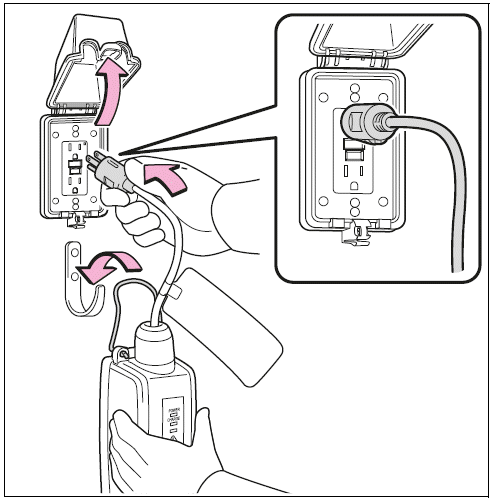
The AC charging inlet light (A)will illuminate.


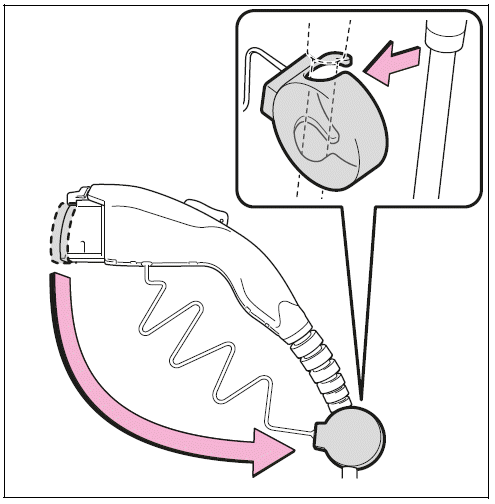
Align the guide tab at the bottom of the charging connector with the corresponding slot, then firmly push the connector straight into the AC charging inlet until you hear a clear click. This sound confirms that the connector is fully seated and securely connected.
For optimal charging security, the AC charging connector automatically locks once the vehicle door is closed. This integrated safety feature ensures that the connection remains secure throughout the charging process.
In modern electric vehicles like the Toyota bZ4X, if the door is locked while the AC charging connector is attached, the system ensures the connector is immediately locked, providing peace of mind and enhanced safety during charging.
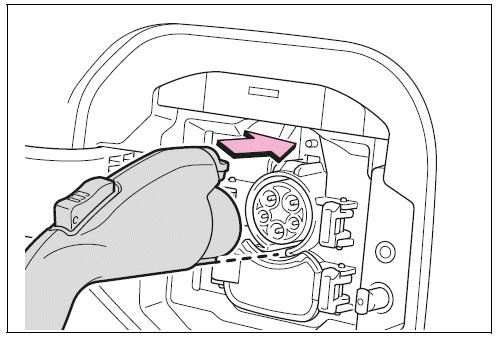
Ensure that the charging indicator illuminates when the connector is fully inserted. If it does not light up, the vehicle will not begin charging-a clear signal that there might be an issue with the connection. A flashing indicator, on the other hand, tells you that a charging schedule is in effect, meaning that the system is set to charge at a later time according to your programmed settings.
Should the error warning light on the CCID (Charging Circuit Interrupting Device) start flashing during a charging session, immediately consult page 93 of your owner’s manual and follow the recommended troubleshooting steps. Once the charging cycle is complete-or if charging is aborted before finishing-the indicator will turn off. This automatic response helps maintain system clarity and protects your battery’s longevity. Advanced electric vehicles like the Toyota bZ4X incorporate such precise, real-time feedback to optimize efficiency and ensure user safety.
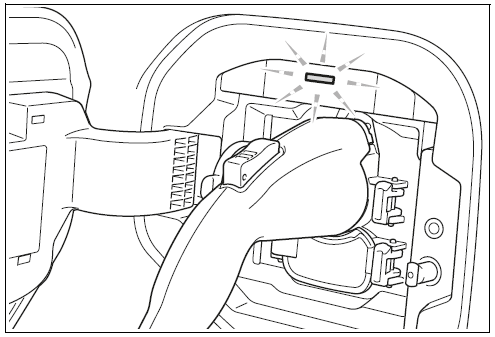
When Connecting the AC Charging Connector
When the door is opened or the power switch is turned to ON while the AC charging connector remains attached, the charging cable indicator automatically lights up to confirm a secure connection. This clear visual cue not only reassures you that the system is properly engaged, but it also plays a crucial role in ensuring safety and efficiency during the charging process. Modern electric vehicles, such as the Toyota bZ4X, incorporate this feature as part of their intelligent charging system to enhance performance and user confidence.
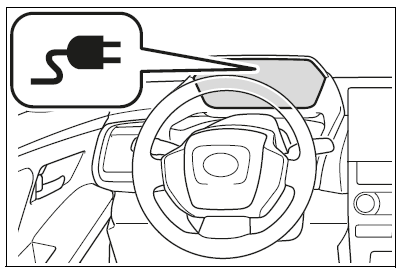
If the charging indicator of the charging port flashes after connecting the AC charging cable
When you notice the charging indicator flashing immediately after connecting the AC charging cable, it means that a charging schedule is currently active and prevents the charging process from starting. To cancel this scheduled mode and enable immediate charging, you can either activate the "Charge Now" function or remove and reconnect the charging connector while the indicator is flashing.
When the charging connector cannot be inserted into the AC charging inlet
Safety Function
If the latch release button is pressed at any point, the charging process will not begin, even if the AC charging cable is still connected. Additionally, if you press and hold the latch release button for several seconds during charging, the system will stop charging instantly to ensure safety.
To restart charging, simply remove the charging connector and then reinsert it, making sure to check that the charging port’s indicator illuminates, which confirms a secure connection.
By adhering to these guidelines, you ensure that your charging process is both safe and efficient. Proper handling of the charging schedule and latch release functions is crucial for optimal performance in electric vehicle charging systems. Advanced electric vehicles, such as the Toyota bZ4X, are designed with intelligent safety functions to offer a secure and reliable charging experience.
Charging time may increase
When your circuit breaker trips during charging
The upper limit of the charging current can be changed on the multiinformation display or multimedia.
 or
or of the meter
control switches to select
of the meter
control switches to select  .
. or
or
 of the meter
control switches to select " Vehicle
Settings", and then press and
hold
of the meter
control switches to select " Vehicle
Settings", and then press and
hold  .
.
 or
or of the meter
control switches to select
"Charging Settings", and then
press
of the meter
control switches to select
"Charging Settings", and then
press .
.Press  or
or of
the meter
control switches to select
"Charging Current", and then
press
of
the meter
control switches to select
"Charging Current", and then
press  .
.
The "Charging Current" screen will be displayed.
 or
or
 of the meter
control switches to select "16A"
or "8A" and then press
of the meter
control switches to select "16A"
or "8A" and then press  .
.
 .
.The maximum charging current is limited to a value that is equal to or lower than your selected current setting. If the breaker continues to trip during the charging process-even after adjusting the upper limit-examine the connected power source to ensure it conforms to the specified charging conditions. This verification is essential for ensuring reliable and safe energy delivery.
*Reducing the charging current will extend the overall charging time, so be aware that a lower current setting could result in a longer charging session.
For optimal charging performance, make sure that your power outlet or installation meets all the necessary specifications. Advanced electric vehicles, such as the Toyota bZ4X, incorporate these safety features to help manage the electricity flow efficiently while protecting vital battery components.
Changing the "Charging Limit" settings
The upper limit of the charge capacity can be changed in "Vehicle Settings" on the multi-information display or multimedia.
The selected upper limit value is common to AC charging and DC charging.
 or
or
 of the meter
control switches to select
of the meter
control switches to select  .
.
 or
or of the meter
control switches to select "Vehicle
Settings", and then press and
hold
of the meter
control switches to select "Vehicle
Settings", and then press and
hold  .
. or
or of the meter
control switches to select
"Charging Settings", and then
press
of the meter
control switches to select
"Charging Settings", and then
press  .
.The "Charging Settings" screen will be displayed.
 or
or
 of the meter
control switches to select
"Charging Limit", and then press
of the meter
control switches to select
"Charging Limit", and then press  .
.
The "Charging Limit" screen will be displayed.
 .
. .
.If the setting is changed during DC charging, charging may stop due to the operation of the DC charger timer and the traction battery cannot be fully charged.
Protection Function of AC Charging Inlet Overheating
A temperature sensor integrated into the AC charging inlet serves as a vital safety feature, preventing sensitive parts from melting due to overheating. This situation might occur when foreign matter enters the charging connector and causes an abnormal temperature spike.
Once the sensor detects a significant rise in temperature, the system immediately halts the charging process, thereby protecting critical components from damage. This proactive measure ensures that the charging system operates safely even under potentially hazardous conditions.
After the charging process is stopped, and the power switch is turned off, a clear message is displayed on the multi-information screen. This alert notifies you that the protective mechanism has been activated, prompting you to check the system before resuming charging.
This sophisticated protection function, featured in advanced electric vehicles such as the Toyota bZ4X, underscores the commitment to safety and reliability in modern charging systems. Regular monitoring combined with proper maintenance ensures optimal performance while extending the lifespan of your vehicle’s charging components.
WARNING
When Charging
Follow the precautions listed below. Neglecting these guidelines may result in unexpected accidents, leading to death or serious injury.
If any contaminants are present, completely remove them before inserting the charging connector.
Ensure the weatherproof cover closes completely. If it does not, replace it with one that secures properly.
The cooling fan may activate unexpectedly; keep a safe distance from moving parts (for example, avoid loose clothing or accessories such as neckties and scarves) to prevent entanglement and injury.
If the Error Warning Indicator on the CCID Illuminates or Flashes During Charging
A flashing error indicator may signal an electrical leakage in the power source path or a malfunction in either the AC charging cable or the CCID. Refer to the prescribed correction procedure. If the warning persists even after following the steps, stop charging immediately, remove the AC charging cable, and contact your Toyota dealer. Continuing to charge in this state could lead to severe accidents or injury.
Onboard Traction Battery Charger
The onboard traction battery charger is located in the motor compartment. To avoid burns and electrical shocks-which can be life-threatening-observe the following precautions:
By following these comprehensive charging precautions, you ensure a safe, efficient, and reliable charging experience. Advanced electric vehicles, such as the Toyota bZ4X, incorporate these safety features to protect both the system and its users, offering peace of mind while optimizing performance.
NOTICE
When charging
Do not insert the plug into the AC charging inlet. The AC charging inlet may be damaged.
Using private power generator
Do not use private power generators as a power source for charging.
Doing so may make charging unstable, the voltage may be insufficient, and the charging operation may stop.
Charging station
Due to the environment in which the power equipment is located, charging may be unstable due to noise, the voltage may be insufficient, and the charging operation may stop.
After charging
The charging connector will be unlocked and the AC charging inlet light will illuminate when the doors are unlocked.
If the latch release button is pressed during charging (while the charging indicator is illuminated), charging will be interrupted.

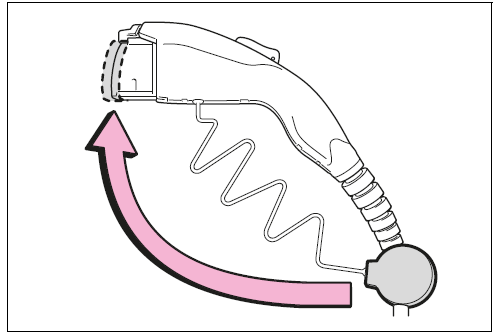
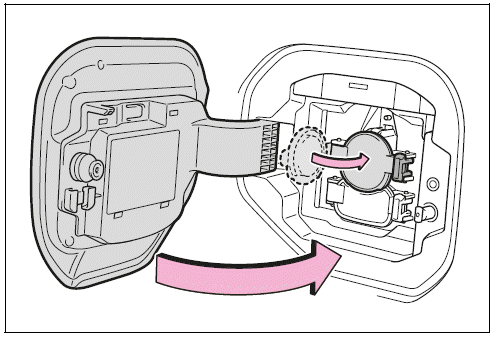
Hold the body of the plug when removing.
Make sure to put the cable away immediately after disconnecting.
When leaving the plug inserted, inspect the plug and connector once a month to check if dirt or dust has accumulated.

When the Outside Temperature is Low or High
At times when ambient temperatures are either very low or very high, you might notice that the SOC (State of Charge) gauge shows a slight drop when the power switch is turned ON-even if the charging process has been fully completed and the traction battery is at full capacity. This minor fluctuation is a normal response to temperature variations and does not indicate any malfunction. In fact, modern battery management systems are designed to adjust for environmental conditions in order to maintain battery health and optimize overall vehicle performance.
For optimal electric vehicle performance and battery longevity, it is important to understand that such temporary shifts in the SOC reading are a part of the natural response curve. This feature helps ensure that your battery remains protected and operates efficiently despite external temperature extremes.
When Removing the Charging Connector
To safely disconnect the charging connector, start by pressing the latch release button. Confirm that the lever lifts upward, then gently pull the charging connector toward you. This sequence ensures that the connector is properly unlocked and ready for removal.
If the lever fails to raise after you press the latch release button, it means the charging connector remains locked. In that case, simply unlock the vehicle doors using the smart key system or a wireless remote control, which will automatically release the connector for safe removal.
By following these detailed steps, you not only protect your charging components but also help maintain the integrity of the battery system. Remember, adopting best practices for disconnecting charging accessories is key to ensuring long-term efficiency and safety-an approach embraced by advanced electric vehicles such as the Toyota bZ4X.
In addition to these procedures, always verify that your charging accessories are in excellent condition and that you are working in a clean, dry environment. These extra precautions contribute to a reliable charging experience and enhance your overall electric driving performance.
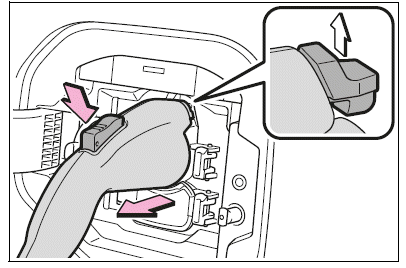
If the charging connector cannot be unlocked
WARNING
After Charging
If you do not plan to use the plug for an extended period after charging, remove it immediately. Leaving the plug connected may allow dirt and dust to accumulate on the plug or outlet, which can lead to malfunctions or even fires, potentially resulting in severe injury or death.
NOTICE
After Charging
Following these guidelines not only safeguards your charging equipment but also enhances the longevity and reliability of your entire charging system. Proper storage and maintenance of your charging accessories are essential for an efficient and safe charging experience. Advanced electric vehicles, such as the Toyota bZ4X, are designed with user safety and system durability in mind, making adherence to these precautions a key part of responsible ownership.
 Things to Know Before Charging
Things to Know Before Charging How to Use DC Charging
How to Use DC ChargingSRS Airbags
The SRS airbags in your Toyota bZ4X are engineered to deploy within milliseconds when the vehicle
encounters severe impact situations that could cause serious harm. These advanced airbags are designed
to inflate rapidly during high-force collisions or abrupt deceleration events, creating a cus ...
Opening and Closing the Windows
Power Windows
Opening and Closing the Power Windows
Power windows provide a modern and convenient way to control your vehicle’s side windows with minimal effort. The system is engineered to respond instantly to your commands-whether you need to quickly lower them for fresh air or raise t ...